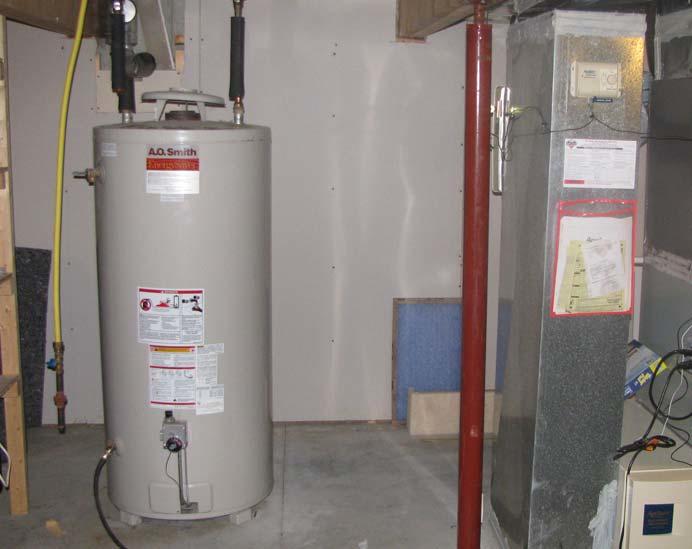Best Practices for Maintaining Your Home's Hot Water SystemEasy Ways to Maintain Your Home's Hot Water System Properly
Best Practices for Maintaining Your Home's Hot Water SystemEasy Ways to Maintain Your Home's Hot Water System Properly
Blog Article
Everybody maintains their own individual way of thinking when it comes to Tips For Maintaining Your Hot Water Heater.

Hot water is vital for day-to-day comfort, whether it's for a rejuvenating shower or cleaning dishes. To ensure your warm water system runs successfully and lasts longer, routine upkeep is vital. This article offers functional tips and insights on exactly how to preserve your home's hot water system to stay clear of disruptions and costly repair services.
Intro
Keeping your home's hot water system might seem overwhelming, yet with a couple of simple steps, you can ensure it operates efficiently for several years ahead. This overview covers everything from understanding your hot water system to do it yourself upkeep pointers and recognizing when to call in professional help.
Significance of Preserving Your Warm Water System
Routine upkeep not just expands the life-span of your warm water system yet additionally guarantees it runs effectively. Ignoring maintenance can result in reduced effectiveness, higher energy costs, and even premature failure of the system.
Indications Your Hot Water System Needs Upkeep
Understanding when your hot water system needs attention can prevent major issues. Look out for signs such as irregular water temperature level, weird sounds from the heating unit, or rustic water.
Flushing the Water Heater
Flushing your hot water heater gets rid of debris accumulation, enhancing efficiency and prolonging its life.
Checking and Changing Anode Rods
Anode poles stop rust inside the tank. Inspecting and changing them when broken is vital.
Complex Issues Calling For Expert Assistance
Examples consist of significant leaks, electrical troubles, or if your hot water heater is constantly underperforming.
Routine Professional Upkeep Perks
Professional maintenance can consist of complete evaluations, tune-ups, and guaranteeing conformity with safety and security requirements.
Inspecting and Readjusting Temperature Level Settings
Readjusting the temperature level settings makes certain ideal performance and safety and security.
DIY Tips for Maintenance
You can do several upkeep jobs yourself to maintain your hot water system in leading condition.
Looking for Leakages
Routinely check pipes and links for leaks, as these can bring about water damage and higher expenses.
Understanding Your Warm Water System
Before diving right into maintenance jobs, it's useful to understand the standard components of your warm water system. Generally, this consists of the water heater itself, pipelines, anode rods, and temperature level controls.
Monthly Upkeep Tasks
Regular regular monthly checks can assist capture minor concerns before they rise.
Evaluating Stress Relief Valves
Examining the stress relief valve guarantees it functions appropriately and prevents too much pressure accumulation.
Shielding Pipes
Protecting warm water pipes minimizes warmth loss and can save power.
When to Call a Specialist
While DIY upkeep is beneficial, some issues need specialist knowledge.
Verdict
Regular maintenance of your home's warm water system is essential for effectiveness, long life, and price financial savings. By following these ideas and recognizing when to seek expert aid, you can ensure a reputable supply of warm water without unanticipated disruptions.
How to Maintain an Instant Hot Water Heater
Before tinkering with your hot water heater, make sure that it’s not powered on. You also have to turn off the main circuit breaker and shut off the main gas line to prevent accidents. Also turn off the water valves connected to your unit to prevent water from flowing into and out of the appliance. 2. When you’re done, you have to detach the purge valves’ caps. These look like the letter “T” and are situated on either side of the water valves. Doing so will release any pressure that has accumulated inside the valves while at the same time avoid hot water from shooting out and burning your skin. 3. When the purge valves’ caps are removed, you have to connect your hosing lines to the valves. Your unit should have come with three hoses but if it didn’t, you can purchase these things from any hardware or home repair shops. You can also get them from retail stores that sell water heating systems. Read the user’s manual and follow it to complete this task properly. When the hosing lines are connected, open the purge port’s valves. 4. You should never use harsh chemical cleaners or solutions when cleaning your unit. Make use of white vinegar instead. It should be undiluted and you’ll probably use about 2 gallons. 5. Now flush your water heater. This task should probably take about 40 minutes. We can’t give you specific directions for this because the procedure is carried out depending on the type, model and brand of your heater. With that being said, refer to the user’s manual. 6. When you’re done draining the unit, you have to turn off the purge port valves again. Remove the hosing lines that you earlier installed on each of the water valves. Put the valve caps (purge port) back in their respective places and be very careful so as not to damage the rubber discs that are found inside these caps. 7. Now that everything’s back in place, check your user’s manual again to find out how to reactivate your water heating system. 8. Once it is working, turn one of your hot water faucets on just to let air pass through the heater’s water supply pipes. Leave the tap on until water flows smoothly out of it. https://www.orrplumbing.com/blog/2014/september/how-to-maintain-an-instant-hot-water-heater/

Hopefully you enjoyed reading our excerpt on Tips For Maintaining Your Hot Water Heater. Thank you for taking time to read through our content. Kindly take a moment to distribute this post if you enjoyed reading it. Many thanks for your time. Come back soon.
Schedule Appointment Report this page